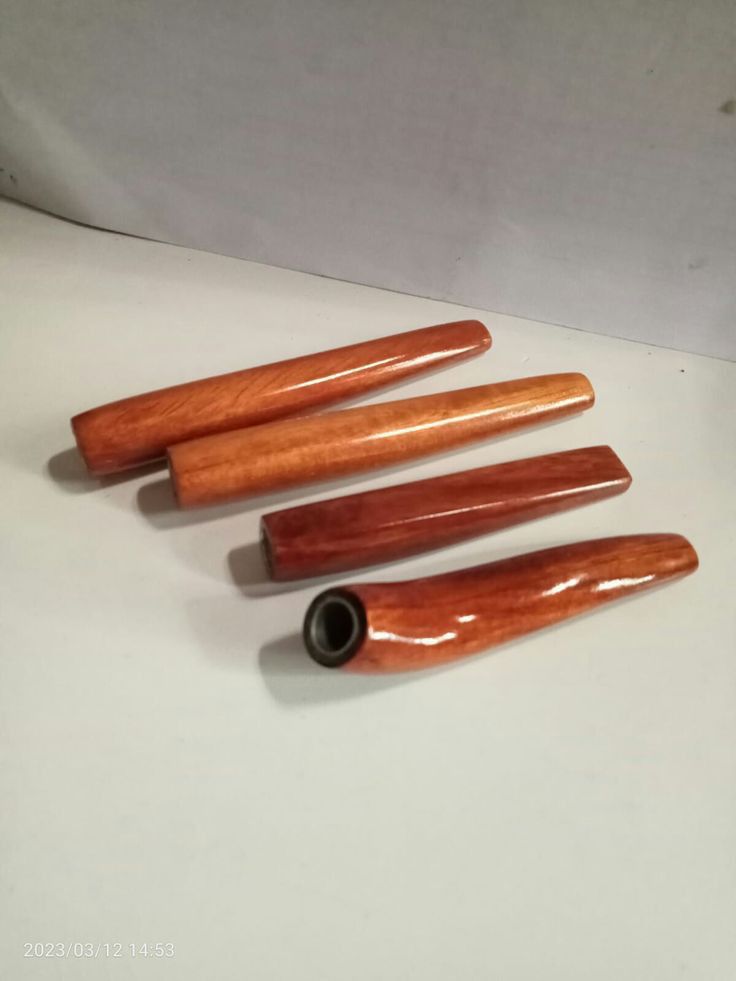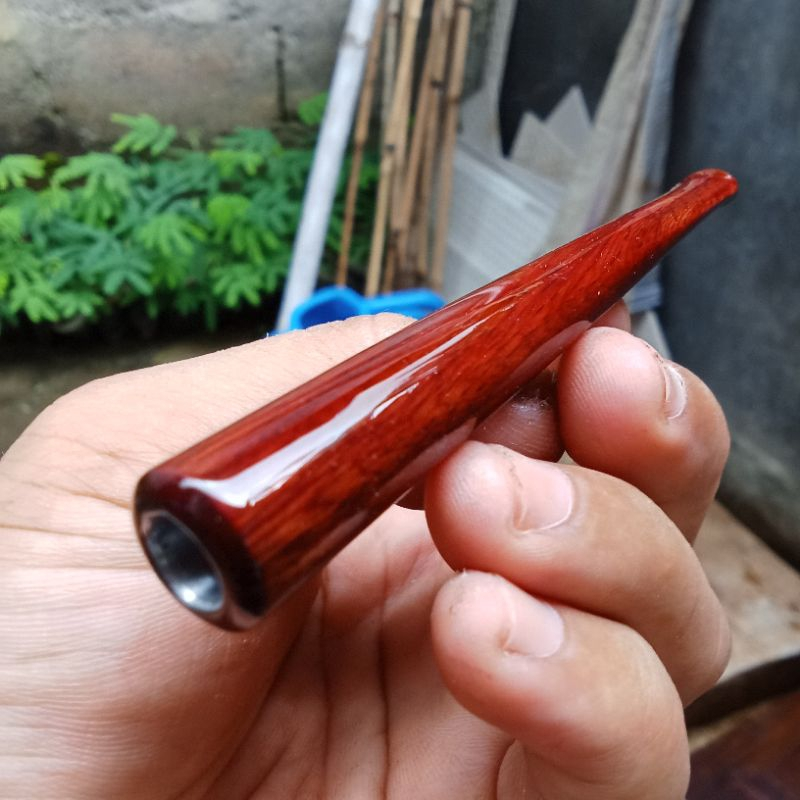A Blast from the Past—Recognize This Timeless Tool?
If you’ve ever laid eyes on this curious little gadget—slender, wooden, often tipped with metal—you’re probably smiling with a touch of nostalgia right now. It may look like something from an antique drawer, but this old-school item once had a very specific and widely used purpose. We’re talking about the traditional wooden mouthpiece, used for smoking handmade cigarettes or pipe tobacco.
It’s not just a tool—it’s a cultural icon in many Asian countries, especially Vietnam. Whether you smoked or not, chances are you saw one in your grandparents’ drawer, your uncle’s shirt pocket, or in movies that captured life in simpler times. Let’s dive into what this small piece of history is all about—and why it still sparks curiosity today.

What Is This Wooden Mouthpiece Exactly?
At first glance, it might seem like a whistle, a pen cap, or even a miniature flute. But in reality, this is a handcrafted smoking accessory, traditionally made from bamboo or hardwood with a metal lining inside. One end fits snugly onto a cigarette or pipe, while the other is placed in the mouth—creating a smoother, cooler smoking experience.
Simple, elegant, and surprisingly efficient, this mouthpiece was the go-to companion for smokers before filters and factory-made solutions became the norm. The metal core helps direct the heat and smoke through the chamber, slightly cooling it before it hits the lips. Not high-tech—but oddly effective.
Why Was It So Popular in Vietnam and Asia?
Back in the day, especially in rural regions, rolling your own tobacco was common. Manufactured cigarettes were either too expensive or not widely available. So people made their own blends, rolled their own cigarettes, and used these wooden mouthpieces to get a cleaner hit and reduce the harshness.
Video: Making a STEM for a smoking pipe – from start to finish
In Vietnam, this tool wasn’t just practical—it was part of the ritual. Picture an old man sitting on a low stool, slowly packing his pipe, attaching the mouthpiece, and lighting up. There’s something almost meditative about it. The process mattered as much as the smoke itself.
Even today, if you travel to more traditional neighborhoods or countryside areas, you might still see one in action. It’s a subtle nod to heritage and habit, wrapped in wood and brass.
The Craftsmanship Behind Every Piece
One thing that made these mouthpieces stand out was how personal they were. Many were handcrafted by local artisans who carved the wooden bodies, shaped the inner core, and polished the pieces to a shine. No two were quite the same. Some were minimalist and smooth. Others had engravings, decorative accents, or unique shapes that reflected local designs.
And because they weren’t mass-produced, people often treated them with a sense of pride. You didn’t just borrow someone’s mouthpiece. You had your own. Sometimes, it was even passed down or gifted, like a humble heirloom with a smoky past.

Healthier? Not Exactly. But It Felt That Way
Let’s be clear—smoking is smoking. But for those who used these mouthpieces, there was a belief that it made the experience less intense. The bamboo or wood helped cool the smoke, while the longer chamber gave the illusion of filtering out impurities.
Of course, by modern health standards, it didn’t change much. But back then, when people didn’t have access to filters or pre-packaged cigarettes, this was seen as a smart, savvy upgrade. If anything, it made smoking feel more refined.
From Everyday Item to Vintage Collector’s Gem
Fast forward to today, and these traditional wooden mouthpieces are rarely seen in everyday use—but they’ve found new life as collectible items. Antique lovers, cultural historians, and vintage smokers appreciate them not just for what they did, but for what they represent.
You’ll find them in vintage shops across Asia, sold as decorative keepsakes or souvenirs. Some are displayed alongside old cigarette tins, matches, and tobacco boxes—snapshots of a time when life moved slower, and habits were passed down more than bought.
They’ve also become conversation pieces. If someone spots one on your shelf, they’ll ask, “What is that?” And once you explain, the curiosity deepens.
Video: Small Cigar Mouthpiece
Why It Still Matters Today
In a world ruled by disposable everything—vapes, pods, and plastic—it’s refreshing to look back at a piece that was reusable, handcrafted, and culturally rooted. This isn’t about glamorizing smoking. It’s about appreciating the tools, traditions, and stories that came with it.
This wooden mouthpiece reminds us of a time when even the smallest object had meaning. It was part of a larger rhythm of life, where things weren’t rushed, and habits were held with intention.
And that? That’s the kind of history worth remembering.
Conclusion: A Tiny Tool With a Big Cultural Footprint
The traditional wooden mouthpiece may seem simple, even outdated. But for those who know its story, it carries weight. It’s more than just a pipe accessory—it’s a memory, a ritual, and a relic of days when craftsmanship mattered and traditions shaped daily routines.
Whether you’ve used one or just discovered it, this little piece of wood and metal is a reminder that even the smallest tools can hold generations of meaning.